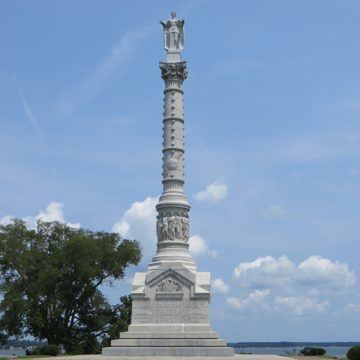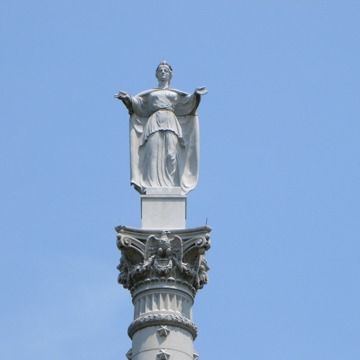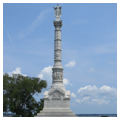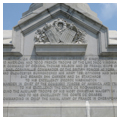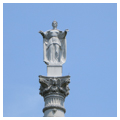The standard Trajan's Column format of a shaft with a crowning figure here receives further elaboration with a complex base composed of a pedimented podium and sculpted drum, a form based on several contemporary French monuments. In 1781 Congress ordered a marble column to be erected on the site to commemorate the victory over Cornwallis at Yorktown. Nothing was done, and in 1880 the secretary of war, Alexander Ramsey, created a commission and appointed Hunt, Van Brunt, and Ward to study the idea of a centennial monument. They in turn appointed themselves as the architects and sculptor, and Congress approved the design in March 1881. At the dedication in October 1881, President Chester A. Arthur spoke during elaborate ceremonies, but construction dragged on into 1884, when the crowning figure of Victory was finally hoisted into place.
You are here
Yorktown Victory Monument
1880–1884, Richard Morris Hunt and Henry Van Brunt; John Quincy Adams Ward, sculptor. East of Main St. and Zweybrucken Rd.
If SAH Archipedia has been useful to you, please consider supporting it.
SAH Archipedia tells the story of the United States through its buildings, landscapes, and cities. This freely available resource empowers the public with authoritative knowledge that deepens their understanding and appreciation of the built environment. But the Society of Architectural Historians, which created SAH Archipedia with University of Virginia Press, needs your support to maintain the high-caliber research, writing, photography, cartography, editing, design, and programming that make SAH Archipedia a trusted online resource available to all who value the history of place, heritage tourism, and learning.

